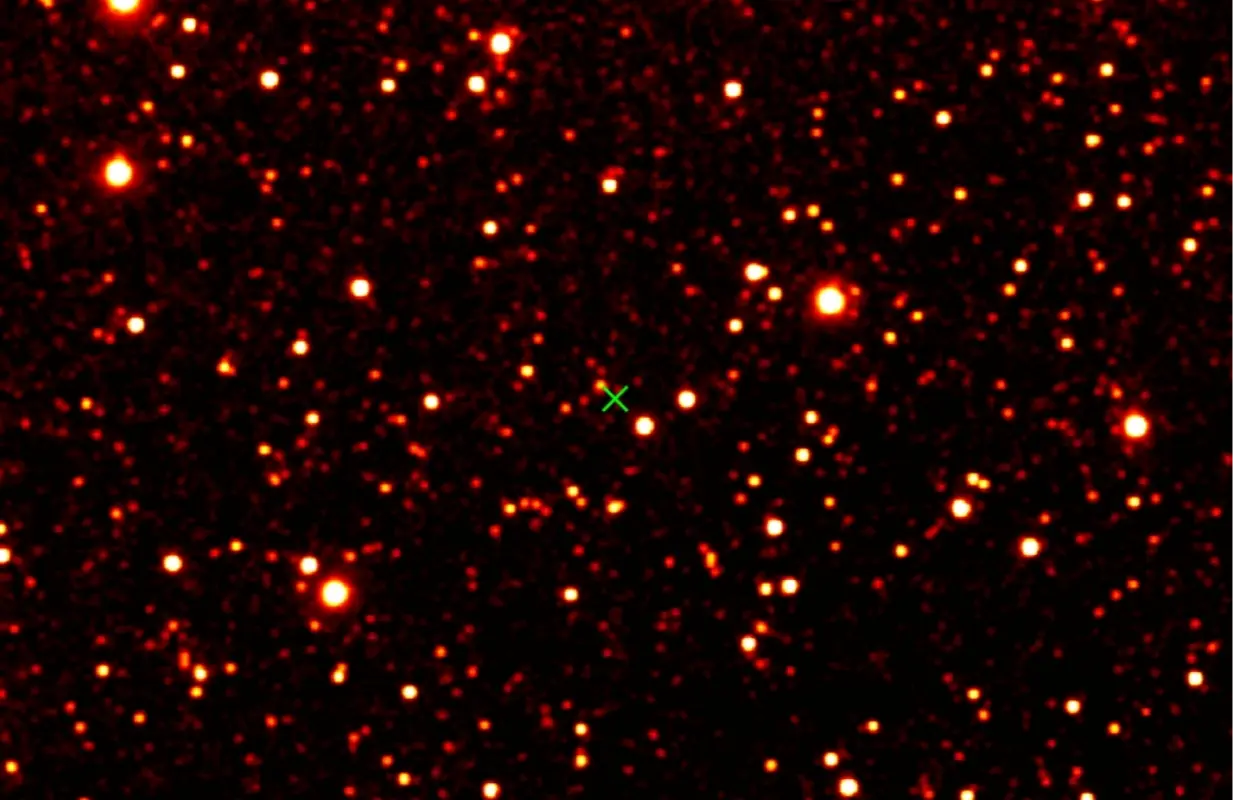New model adjustments affect projected perijove distance for 3I/ATLAS
-
 Comet 3I/ATLAS (Image via NASA)
Comet 3I/ATLAS (Image via NASA)The projected perijove distance of the interstellar object 3I/ATLAS has been updated following changes in the modeling of its non-gravitational acceleration.
According to Harvard Professor Avi Loeb, updates posted by Davide Farnoccia on NASA’s JPL Horizons website show that on October 30, 2025, the value of the radial acceleration component A1, normalized at a heliocentric distance of 1 au, was 1.6x10^{-6} au per day squared.
By November 24, 2025, this coefficient was reduced by a factor of 4 to 4x10^{-7} au per day squared.
Subsequent adjustments revised A1 further to 6.8x10^{-8} au per day squared with a new radial dependence model using 1/r², affecting the forecasted perijove distance for 3I/ATLAS during its encounter with Jupiter on March 16, 2026.
Updates to the non-gravitational acceleration
The new model on JPL Horizons applies an inverse square dependence on distance from the Sun, appropriate for the sublimation of carbon dioxide (CO2) ice inside a heliocentric distance of 5 au.
This replaced the previous model, which had a steeper radial dependence suitable for water (H2O) ice, based on work by Brian Marsden and collaborators.
With this model, the forecasted perijove distance of 3I/ATLAS is now 53.587 (+/- 0.045) million kilometers, slightly outside Jupiter’s Hill radius at the perijove time, which is 53.502 million kilometers.
Inside the Hill radius, Jupiter’s gravity dominates over the Sun’s tidal effect, while objects outside it can be removed by solar gravity.
Historical perijove forecast and revisions
Prior to the latest adjustment, the minimum perijove distance of 3I/ATLAS was forecasted as 53.445 (+/- 0.06) million kilometers, which is identical within one standard deviation to Jupiter’s Hill radius at that time.
Loeb noted this unexpected match and communicated it to Davide Farnoccia, but no response was received.
Within days, the A1 coefficient on JPL Horizons was revised downward, and the new 1/r² model was adopted, using contributions from larger heliocentric distances to explain the measured deviation of 3I/ATLAS from its original gravitational path.
Luminosity and steeper radial profiles
Observations by the Hubble Space Telescope on July 21, 2025, indicate that the luminosity of 3I/ATLAS is dominated by its coma, reflecting that mass loss is proportional to coma mass, as indicated by the scattered sunlight.
A preprint by Marshall Eubanks and collaborators reported this evolution. An earlier report by Qicheng Zhang and Karl Battams suggested a steep luminosity profile of 1/r^{7.5} inside 2 au as 3I/ATLAS approached its perihelion at 1.36 au on October 29, 2025.
Applying this steeper profile would change the expected perijove distance toward closer agreement with Jupiter’s Hill radius. The new 1/r² model may therefore underestimate the non-gravitational acceleration near perihelion.
Verification from future observations
Data from spacecraft such as Juno, Juice, or Psyche will confirm the actual perijove distance.
Since 3I/ATLAS was obscured by the Sun during its perihelion passage, terrestrial telescopes could only provide constraints on its integrated drift, not on the radial dependence of the acceleration near perihelion.
The rare coincidence between the perijove distance and the Hill radius may indicate specific dynamics, but the final verdict will depend on observational data collected as 3I/ATLAS approaches Jupiter on March 16, 2026.
Within Jupiter’s orbit, the probability of a natural match between the perijove distance and the Hill radius is less than 0.00004. JPL Horizons will continue to update the model as new astrometric data become available.
Stay tuned for more updates.TOPICS: 3I/ATLAS, 3I/ATLAS comet, 3I/ATLAS observations, 3i/ATLAS recent updates, 3I/ATLAS trajectory, Avi Loeb 3I/ATLAS
- Study evaluates the alignment of 3I/ATLAS closest approach with Jupiter’s Hill sphere
- Researchers update the route of 3I/ATLAS with support from ExoMars Trace Gas Orbiter
- 3I/Atlas’ journey becomes clearer thanks to Mars Orbiter observations, say astronomers
- Harvard astrophysicist suggests 3I/Atlas may be on a mission to observe Jupiter in bold new theory